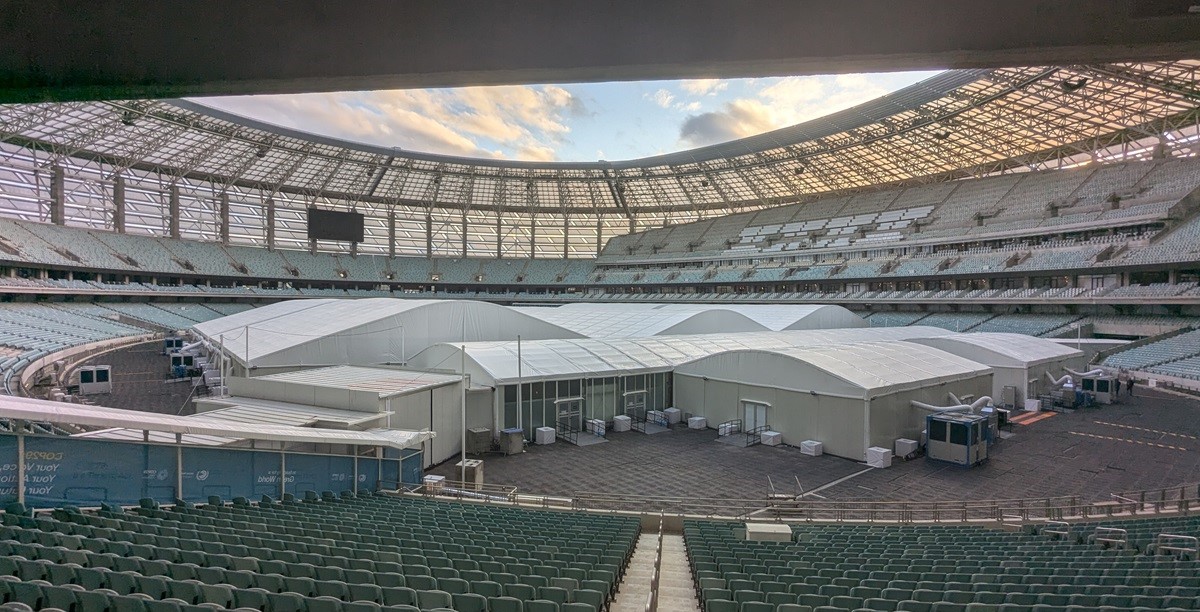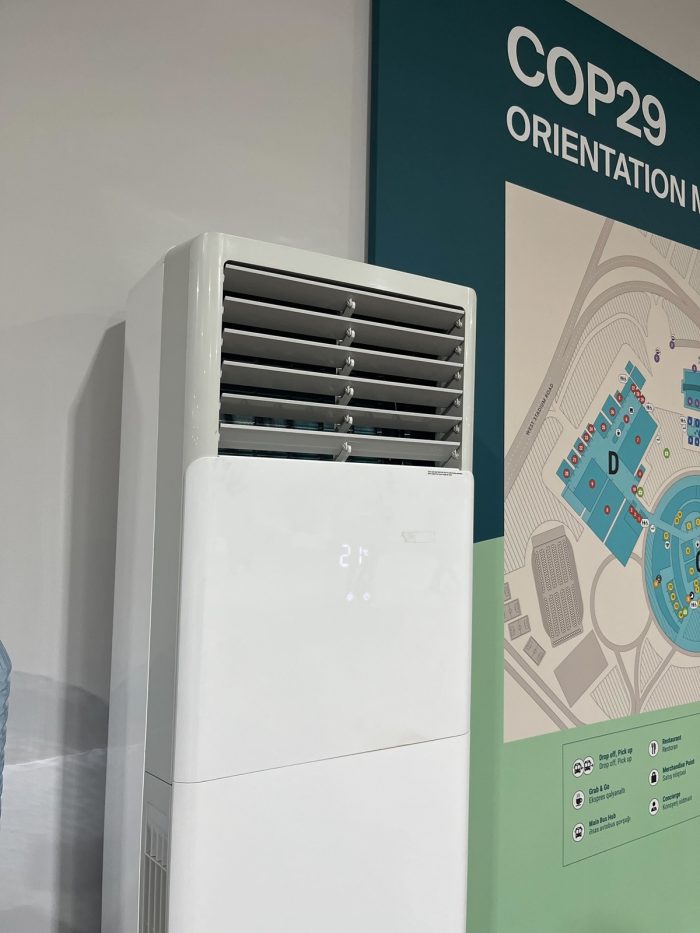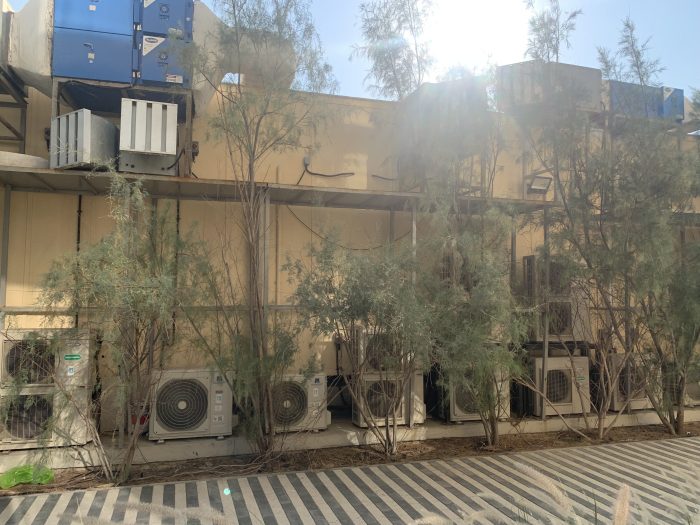Climate-wrecking refrigerants are everywhere at CoP29, cooling the venue while warming the planet



As we approach the end of another year defined by record-breaking global temperatures and deadly natural disasters, turbo-charged by the escalating climate crisis, some 50,000 people have descended on Baku in Azerbaijan for the 29th annual UN Climate Change Conference (CoP29).
For the third year in a row, EIA has looked into the systems being used to keep participants cool as they gather to discuss our warming world and once again we can reveal that they are heavily reliant on potent climate-wrecking refrigerant gases.

HFC-32 units inside bowl at CoP29 (c) EIA
Across the CoP29 venue, a host of different cooling systems have been set up to service the needs of different spaces.
Many of these are temporary systems containing R410A, a refrigerant blend that is over 2,000 times more damaging than CO2 in terms of its climate impact (with a global warming potential, or GWP, of 2,256). EIA also found air-conditioning containing HCFC-22, which is an ozone-depleting substance as well as a potent greenhouse gas (GWP 1,960).

R410A floor standing unit inside the CoP29 venue (c) EIA
In total, based on the equipment EIA was able to access, we estimate that the CoP29 venue has a minimum 975kg of R410A on site, equivalent to 2,199,149kg of CO2 in terms of its potential climate impact when it leaks. Although EIA only observed one unit containing HCFC-22 in publicly accessible areas, this alone contained a quantity of refrigerant equivalent to 3,332kg CO2 equivalent (CO2-eq).
The other major refrigerant EIA found in use at the CoP29 venue was HFC-32 (GWP 675). Although less harmful than R410A or HCFC-22 in terms of its climate impact, the global warming impact of this refrigerant is still far greater than that of natural refrigerants (<5). EIA estimates that 239,220kg CO2-eq of HFC-32 is in use onsite.
Together, the emission of these refrigerant gases is equivalent in terms of potential climate impact to burning roughly 1,220 tonnes of coal. And this, notably, is a conservative estimate that excludes further equipment operating in areas inaccessible to the public.
Since EIA began tracking the refrigerant gases being used at CoP venues in 2022, the record has not been good. The consistent failure of CoP hosts and the United Nations Framework Convention on Climate Change (UNFCCC) Secretariat to embed sustainable cooling into their procurement and logistics processes guarantees that, every single year, the annual climate change conference is contributing further to the ongoing climate emergency.

HFC-410A and HCFC-22 units at CoP28 in 2023 (c) EIA
Last year’s CoP28 in Dubai saw the launch of the Global Cooling Pledge, a prominent event which brought significant attention to the climate impact of refrigerant gases and cooling in general. In total 71 countries have signed the pledge, which aims to reduce cooling related emissions by 68 per cent by 2050.
On the basis of the Global Cooling Pledge, EIA hoped that future CoP hosts and the UNFCCC Secretariat would recognise the vital need to step up their game and ensure a genuinely sustainable approach to cooling at CoP venues.
At CoP29, that has not been the case.
The host country of Azerbaijan has not signed the Global Cooling Pledge, nor has it yet ratified the Kigali Amendment, the global agreement to phase down the use of climate-damaging HFCs under the Montreal Protocol. EIA urges Azerbaijan to both join the Global Cooling Pledge and to ratify the Kigali Amendment as soon as possible, joining the 163 countries that have already done so.
EIA also urges Azerbaijan to report its 2023 production and consumption data as required under the Montreal Protocol, noting that until it does so it will remain in non-compliance with the treaty.
More broadly, EIA urges the UNFCCC Secretariat to ensure that all future CoP hosts develop transparent procurement plans outlining the steps taken to ensure climate-friendly cooling and to report on related emissions from the meeting. This should be part of a process of wider reform of the CoP which would impose strict eligibility requirements for CoP presidencies.
As the most prominent climate change forum in the world, the CoP process must demonstrate best practices for sustainability in all areas, including cooling.
Failing to do so undermines the purpose of the CoP and goes against the clear and urgent need for climate action.